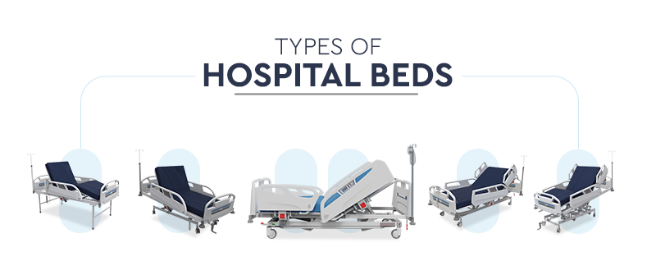Picking a hospital bed for home care seems easy at first. But many factors matter. Does your loved one have trouble moving? Do they have chronic health issues that need special features? Maybe you’re recovering from surgery. You need the right support for healing.
This decision affects comfort, safety, and health outcomes. I’ve learned that most people miss one thing: your patient’s specific medical and mobility needs should guide every choice you make. Based on my experience, I suggest starting with these needs first. Then consider other features.
1. Patient’s Medical and Mobility Needs
I recommend starting with a clear look at the patient’s medical condition and mobility requirements. Patients with limited mobility need special attention. This includes those with chronic diseases like severe arthritis or advanced neurological conditions. Those at high risk of falls also need extra care.
Based on my experience, these patients benefit most from beds that offer height adjustment and different positioning options. A bed with head and foot elevation helps a lot. A Trendelenburg setting can boost comfort and improve the quality of care.

Crucial Bed Features to Consider
Elevation Capability
I suggest beds that allow elevation of the head or legs. They are vital for:
Patients with congestive heart failure
Individuals recovering from surgery
Those with respiratory issues or reflux
Elevating body parts helps improve breathing and circulation.
Pressure Sore Prevention
Is the patient bedridden? Do they suffer from neuropathy, diabetes, or spinal injuries? I recommend choosing:
Pressure-relief mattresses
Lateral rotation beds
These features help prevent bedsores and avoid related problems.
I believe matching bed selection to the patient’s clinical needs is essential. Consider risks from immobility. Factor in the physical limitations of the home. This approach ensures patient safety. It supports optimal recovery at home.
2. Type of Hospital Bed: Manual vs. Semi-Electric vs. Full-Electric
Picking the right hospital bed matters a lot. It affects patient comfort and how easy it is for caregivers to help. Manual, semi-electric, and full-electric beds each have their own benefits. Your choice depends on patient needs, caregiver ability, and budget.
Quick Comparison
|
Bed Type |
Adjustability |
Cost |
Labor Required |
Best For |
|---|---|---|---|---|
|
Manual |
All manual |
Lowest |
High |
Short-term, strong caregivers, budget limits |
|
Semi-electric |
Head/foot electric, height manual |
Moderate |
Moderate |
Frequent repositioning, rare height changes |
|
Full-electric |
All electric |
Highest |
Minimal |
Long-term care, weak caregivers, bariatric care |

Selection Considerations
Manual hospital beds work best if cost is your top concern. They suit basic or temporary care needs.
Semi-electric hospital beds suit those who want good comfort with a moderate budget.
Full-electric hospital beds are my top choice for long-term home care. They give maximum comfort. I suggest this if patient or caregiver strength is limited. Based on my experience, investing here improves safety and quality of life. This matters most for people facing chronic or progressive health problems.
3. Weight Capacity and Bed Size: Ensuring Safety and Comfort
I suggest you check both weight capacity and bed size before buying a hospital bed for home care. These two factors determine patient safety, comfort, and proper support.
Understanding Weight Capacity
Weight capacity is the safe maximum load a hospital bed can support. This includes the patient, mattress, bedding, medical equipment, and a caregiver who might sit on the bed. If you exceed this limit, the bed frame could fail. This could cause injury.
Bed Size and Dimensions: Matching Patient Needs
Bed dimensions affect both safety and comfort. A bed that’s too small or narrow raises the chance of falls and discomfort.
Practical Tips for Choosing Weight Capacity and Size
Calculate total load: Add up the patient’s weight, mattress, and all accessories or equipment.
Safety margin: I suggest selecting a bed with a generous safety buffer (at least 100 pounds above the actual load).
Body fit: Make sure the bed is wide and long enough for the patient’s body type.
Consult official specs: Always check manufacturer information to confirm weight limits and exact dimensions.
Ask about safety certifications: Choose beds that meet established safety standards for peace of mind.
Based on my experience, getting the weight capacity and size right is essential for home care. This step keeps patients protected. It makes care easier and more effective.
4. Comfort and Mattress Support: Better Sleep and Pressure Relief
Picking the right hospital bed mattress matters just as much as picking the bed. For home care, mattress comfort and pressure support directly affect health, safety, and well-being.
My Advice and Tips
Based on my experience, the best mattress matches the patient’s clinical and comfort needs. I suggest you focus on:
Pressure-relieving design: Pick technology that fits the patient’s risk for pressure sores.
Easy maintenance: Waterproof, antimicrobial covers save time. They support hygiene.
Compatibility: Make sure the mattress fits your hospital bed. It should move well with adjustable functions.
I believe selecting a hospital bed and mattress together works best. Focus on comfort and medical support. This leads to better outcomes. It improves the quality of home care.
5. Safety Features: Essential Hospital Bed Safety Considerations for Home Care
I believe a safe home care environment starts with the right hospital bed. Hospital beds protect patients from accidents that can be prevented. The right safety features can reduce falls and injuries. This gives peace of mind to patients and caregivers alike.
Key Hospital Bed Safety Features
Side Rails for Fall Prevention
Side rails are your first defense against falls.
Full-length rails are vital for patients at high risk of falling. This is true during sleep or when turning.
Half or adjustable rails make it easier for patients to reposition themselves. They can also get out of bed with more safety.
Evidence shows most patients use side rails for support. They use them when entering, moving, or exiting the bed.
Lockable Wheels for Stability
Secure wheel locks are a must.
I recommend you always check that wheel brakes are engaged. Do this before any transfer or adjustment.
Easy Controls and Bed Adjustments
Simple controls benefit both patients and caregivers.
Most modern beds provide easy-to-use electronic controls. You can adjust the head, foot, and bed height.
This reduces the risk of injury from manual handling. It also provides precise adjustments for comfort and safety.
Advanced and Modern Safety Technology
Bed Exit Alarms & Interactive Alerts
Smart beds with built-in alarms use sensors. These detect when a patient tries to leave the bed without help.
Alerts are sent in real-time. Some models even offer verbal prompts (“Please don’t get up”). These remind patients to wait for assistance.
These features address the dangers of wandering. They also help with attempts to get up without supervision.
Low-Height and Adjustable Beds
Adjustable height helps match the patient’s needs. It ensures safe entry and exit.
Low-height beds are ideal for those at extreme risk of falling. They make it easier to get in and out. This reduces injury risk.
In conclusion:
I always prioritize beds with well-designed side rails. Look for locking wheels, simple controls, and advanced alarm systems. Regular professional safety assessments are also key. Use modern technology. Real-time monitoring and interactive alerts can help. They minimize risks and ensure the safest possible home care environment.
6. Space and Placement in the Home: Hospital Bed Setup, Room Size, and Clearances
Before you buy a hospital bed for home use, I recommend measuring the space first. Standard home hospital beds are 36–38 inches wide and 80 inches long. Most models offer height-adjustable frames between 16 and 30 inches. This helps keep the patient comfortable. It also makes care easier to provide.

Key Factors for Hospital Bed Placement
Space for Medical Equipment:
Make sure there is enough room around the bed for important equipment. You may need IV stands, ventilators, wheelchairs, or mobility aids. Keep these items close and within reach. Don’t let them block caregivers from moving around the bed.
Electrical Outlet Access:
Hospital beds with powered adjustments need a reliable power source. Place the bed near grounded electrical outlets. You’ll also need outlets for other medical equipment or chargers.
Flooring and Mobility:
Hard floors work best for rolling bed casters. They let you move motorized frames with ease. Thick carpets, uneven flooring, or large rugs can block wheels. They create hazards too. I suggest clearing the area of trip hazards or uneven spots. This makes adjustments and cleaning much easier.
I believe proper measurement and smart placement create a safer space. They make the environment more comfortable too. This planning helps both patient health and caregiver work. Based on my experience, taking time to plan the room pays off in better care and fewer problems.
7. Budget, Purchase, and Rental Options
You need to understand your budget choices before selecting a hospital bed for home care. The cost of home hospital beds varies based on type, features, and specifications.
Hospital Bed Purchase Options
Buying New:
Highest upfront expense
Gives you a full warranty and a bed with no prior wear or use
Best for long-term care situations
I recommend this option if you need a lasting solution
Renting:
Rates run $200–$500 per month
Best for short-term needs or for trying out different beds before committing
Requires a minimum rental period of one month
Rent-to-own programs: After about 13 months, ownership can transfer to you. This makes a good mid-to-long-term solution.
Real-Life Budget Scenarios
Temporary Recovery (Post-Surgery):
Renting for two months can cost around $400–$1,000 depending on bed features. You avoid the larger upfront cost of purchasing this way.
Chronic Long-Term Care:
Buying, either new or used, may be more cost-effective. This is true if insurance covers part of the expense. You can also use a rent-to-own option for flexibility and value.
In summary:
The right choice depends on your patient’s needs, care duration, and financial situation. I suggest you compare all hospital bed cost, rental, and purchasing options to get the best value. Always verify coverage details with your supplier and insurer.
8. Supplier Reputation and Customer Service: Choosing a Trustworthy Hospital Bed Supplier
I suggest you pay close attention to supplier reputation and customer service when picking a hospital bed for home care. These factors affect your satisfaction and peace of mind for years to come.
Key Factors for Evaluating Hospital Bed Suppliers
Comprehensive Warranty and Maintenance Support
Always confirm the warranty policy. A top supplier offers a clear warranty. They detail terms, duration, and what is covered. I recommend finding suppliers who include maintenance support. This ensures your hospital bed gets serviced fast if problems occur.
Full-Service Offerings: Installation, Repairs, and Troubleshooting
The best hospital bed suppliers give you more than just the product. They offer professional installation, hands-on troubleshooting, and accessible repair assistance. Based on my experience, these extra services make sure the hospital bed is set up right. They also keep it in good working order throughout its use.
Customer Service Responsiveness
Supplier response time matters in urgent home care situations. Leading brands respond fast to customer questions. They solve problems fast too. Quick delivery and rapid support matter to Medicare recipients and those paying out of pocket.
Trusted Industry Leaders
Companies such as Hill-Rom, Grace Medy, and Paramount Bed Co. Ltd. have earned respect for their hospital beds. I like these brands because they focus on patient comfort. They also offer advanced product features and reliable customer care.
What Real Customers Value
Research shows that customers are most satisfied with suppliers who deliver hospital beds fast. These suppliers honor warranty commitments. They provide consistent support throughout the bed’s use. Positive delivery experiences and reliable problem-solving appear most often in high-rated supplier reviews.
In summary:
I suggest you prioritize suppliers with a strong reputation, proven customer service, and solid after-sales support. Spending time researching reviews and warranty details pays off. You’ll have a smooth hospital bed experience at home.
Summarize
I’ve learned that choosing a hospital bed for home care isn’t just about features or price—it’s about creating a safe, comfortable space that supports healing and dignity. Take time to assess your loved one’s needs carefully. Measure your space. Research suppliers thoroughly. The right bed transforms daily care from a struggle into manageable support. Trust your instincts, ask questions, and remember: investing in the right hospital bed is investing in quality of life at home.
